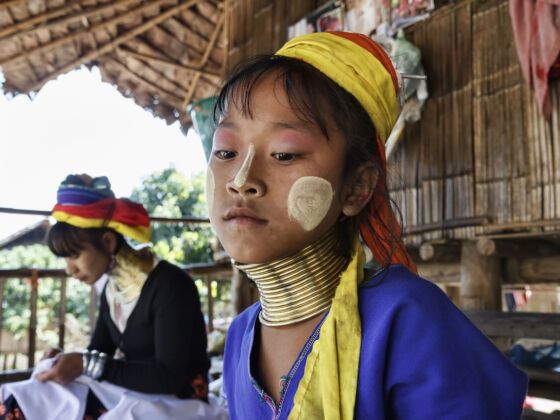In the hills of northern Thailand are the cities of Chiang Mai and Chiang Rai, famous for the Golden Triangle (where the borders of Thailand, Myanmar, and Laos meet) and the Kayan Long Neck Hill Tribe — a sub-group of the Red Karen people.
The Kayan people are originally from Myanmar. Due to political turmoil in the late 80s between the Karen National Liberation Army and the military dictatorship in Yangon, and the violence that ensued, many of the Kayan people escaped to Thailand and were set up in refugee camps.
